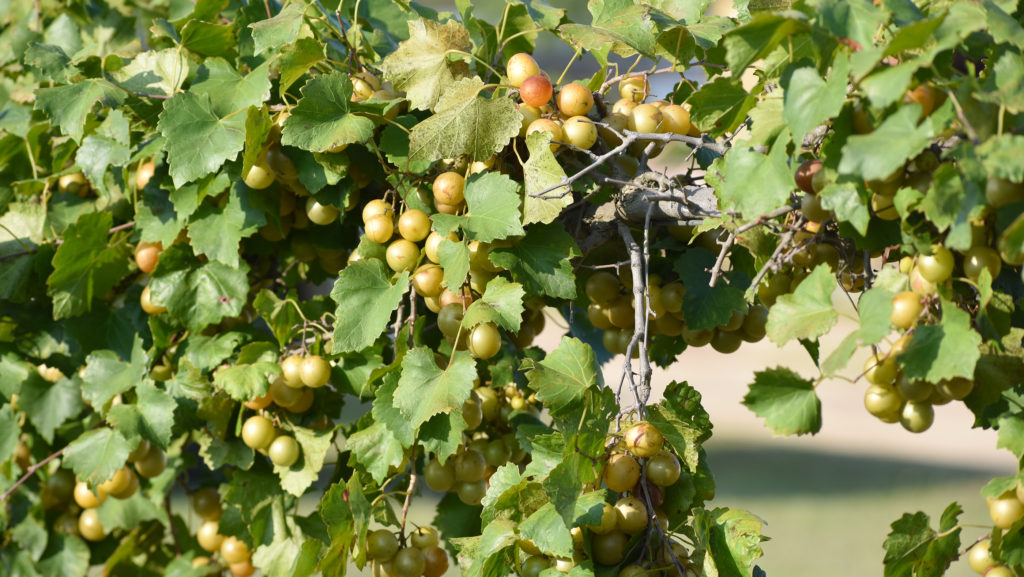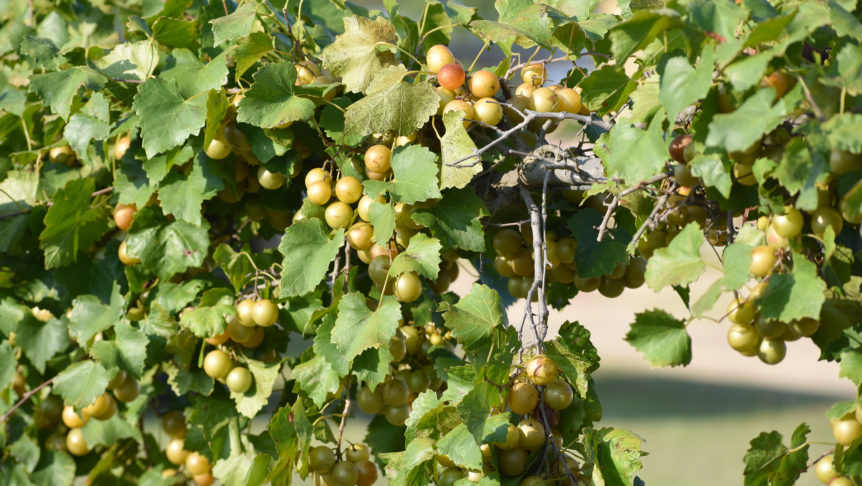
By Clint Thompson
University of Georgia (UGA) muscadine breeder Patrick Conner advises would-be growers about producing the grape in the Southeast.
During a field day on Aug. 17 at the UGA Tifton Campus, Conner said producers should be wary about two factors if they pursue growing the crop. The first is letting the vine overcrop. There is a danger in allowing too many grapes to produce on a single vine.
“That can lower the quality, because it’s taking too many reserves from the vine. Especially on a young vine, you need to get in there and if it’s just setting a solid wall of fruit, take that fruit off to have more modern crop load so you’re not exhausting the vine,” Conner said. “When you look at a muscadine vine, you should mostly see leaves. If you’re seeing a lot of berries exposed to the sun, that suggests you’re getting more berries and not enough leaf cover of the vine.”
Producers also need to consider the environment the summer brings in Georgia every year. It is often conducive to diseases forming on the bronze muscadine grapes which could be detrimental to the overall health of the vine and that year’s crop.
“The other thing you can get into, if you have a rainy August, you can get a lot of soft rots coming in on the bronze varieties. The answer to that is either, spray fungicides on the bronze or if you’re a smaller grower, I would say plant the black variety, because they tend to not get any of those soft rot diseases,” Conner said.










